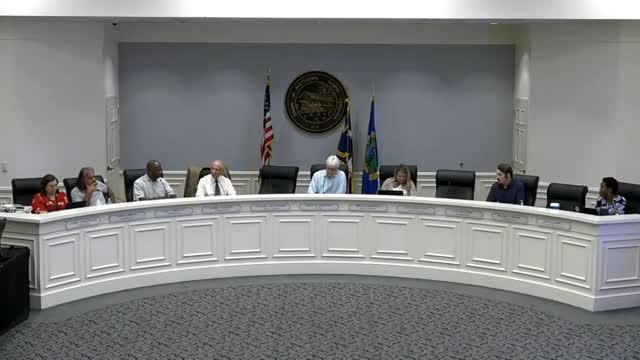Town leaders clash over controversial John Street expansion plans
August 20, 2024 | Matthews, Union County, North Carolina

This article was created by AI summarizing key points discussed. AI makes mistakes, so for full details and context, please refer to the video of the full meeting. Please report any errors so we can fix them. Report an error »

In a recent government meeting, officials discussed the contentious plans for the John Street corridor, focusing on the proposed expansion to a four-lane divided highway. The conversation highlighted significant community concerns regarding the impact of such a development on the town's historic character and pedestrian safety.
Commissioner Garner emphasized the need for a compromise, suggesting an alternative approach that would maintain aesthetic appeal while accommodating traffic flow. She pointed out that the current plan, which prioritizes capacity improvements, may not align with the desires of local residents who oppose a highway-like structure running through their downtown area.
Dana, a staff member involved in the ongoing John Street study, provided insights into previous modeling efforts that indicated the road could function adequately without the proposed expansion. She noted that the sub-area model used for local planning showed that John Street would not fail under projected traffic conditions, suggesting that a two-lane configuration could suffice.
However, representatives from the North Carolina Department of Transportation (NCDOT) maintained that the project was approved as a four-lane capacity improvement, arguing that altering the scope would require a complete re-evaluation and re-competition for funding. They expressed that the project had already undergone rigorous scoring and ranking processes, making it difficult to accommodate local preferences without jeopardizing funding for other critical projects.
The discussion revealed a broader frustration with the state's transportation funding mechanisms, with several commissioners voicing their concerns about the lack of flexibility in addressing local needs. They argued that the current approach prioritizes vehicle capacity over community character and pedestrian safety, which could lead to detrimental effects on the town's historic core.
As the meeting concluded, officials acknowledged the need for a decision on the project soon, with the understanding that if the community opts against the four-lane expansion, they may have to forgo the funding altogether. The ongoing debate underscores the tension between infrastructure development and preserving the unique character of historic towns, a challenge faced by many municipalities across the state.
Commissioner Garner emphasized the need for a compromise, suggesting an alternative approach that would maintain aesthetic appeal while accommodating traffic flow. She pointed out that the current plan, which prioritizes capacity improvements, may not align with the desires of local residents who oppose a highway-like structure running through their downtown area.
Dana, a staff member involved in the ongoing John Street study, provided insights into previous modeling efforts that indicated the road could function adequately without the proposed expansion. She noted that the sub-area model used for local planning showed that John Street would not fail under projected traffic conditions, suggesting that a two-lane configuration could suffice.
However, representatives from the North Carolina Department of Transportation (NCDOT) maintained that the project was approved as a four-lane capacity improvement, arguing that altering the scope would require a complete re-evaluation and re-competition for funding. They expressed that the project had already undergone rigorous scoring and ranking processes, making it difficult to accommodate local preferences without jeopardizing funding for other critical projects.
The discussion revealed a broader frustration with the state's transportation funding mechanisms, with several commissioners voicing their concerns about the lack of flexibility in addressing local needs. They argued that the current approach prioritizes vehicle capacity over community character and pedestrian safety, which could lead to detrimental effects on the town's historic core.
As the meeting concluded, officials acknowledged the need for a decision on the project soon, with the understanding that if the community opts against the four-lane expansion, they may have to forgo the funding altogether. The ongoing debate underscores the tension between infrastructure development and preserving the unique character of historic towns, a challenge faced by many municipalities across the state.
View full meeting
This article is based on a recent meeting—watch the full video and explore the complete transcript for deeper insights into the discussion.
View full meeting
